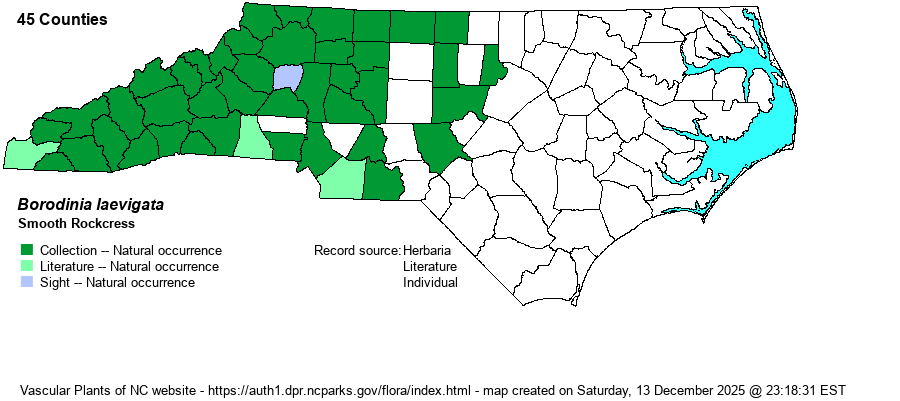| Author | (Muhlenberg ex Willdenow) P.J. Alexander & Windham | |
| Distribution | Throughout the Mountains and Piedmont foothills. Scattered across the Piedmont east to Caswell, Chatham, and Moore counties; absent in the northeastern portions.
This is a widespread Eastern species found from eastern Canada south to central GA and OK. | |
| Abundance | Generally common in the Mountains and foothills; infrequent to locally fairly common in the central Piedmont, but uncommon in the eastern portions. It is slightly more numerous in the western part of the state than is the similar B. canadensis. | |
| Habitat | This species grows in somewhat rocky places on mesic soil, on average, but it certainly grows in dry soil as well as rich soil, but usually on high pH soil. Thus, its habitats are very similar to those of B. canadensis -- rocky woods, margins of rock outcrops, rocky wooded borders, and similar places, though this species can occur into more somewhat acidic soils. | |
| Phenology | Blooms earlier than does B. canadensis, from April to May, and fruits from May into June. | |
| Identification | This is a similar species to the equally widespread B. canadensis; as it grows to 2-3 feet tall and is mostly unbranched. The stem is smooth and generally glaucous, as are the leaves. The alternate stem leaves are lanceolate, about 3-4 inches long but only 3/4-inch wide, usually with a few serrations, but moderately to strongly clasping at the base. The flower cluster is a raceme at the end of the stem, with scattered small flowers. Each has 4 narrow white petals, though the flower is not showy. In this species, the pedicels are erect to ascending and rather straight, such that the siliques (long and narrow fruit capsules) are ascending though usually gently curved downward owing to the weight of the capsule. In B. canadensis, the pedicels are downward curved, such that the flowers and especially the capsules hang downward; the leaves are pubescent and medium green, and the leaves taper to the stem. There are several very rare species in NC that were formerly included within B. laevigata -- B. burkii and B. missouriensis. See those species accounts for identification. Biologists normally see both this species and B. canadensis routinely in the mountains and western Piedmont, but into the central and eastern Piedmont these two are observed only locally. | |
| Taxonomic Comments | The species was formerly named as Arabis laevigata. RAB (1968) and many other older references had the species divided at least into three varieties -- the nominate one, var. burkii, and var. missouriensis. These three are usually now listed as full species. Weakley (2020) moved this and other species from Boechera to Borodinia.
| |
| Other Common Name(s) | Common Smooth Rockcress | |
| State Rank | S4 | |
| Global Rank | G5 | |
| State Status | | |
| US Status | | |
| USACE-agcp | | |
| USACE-emp | | |

